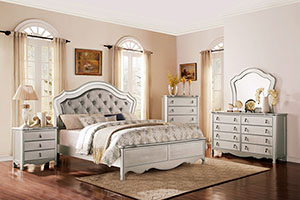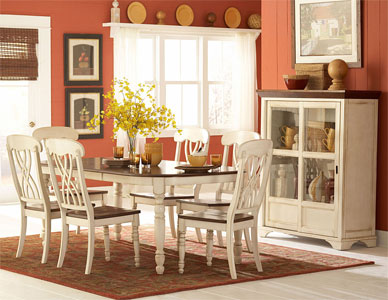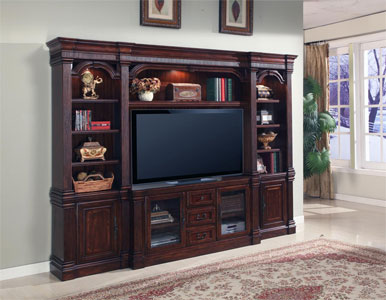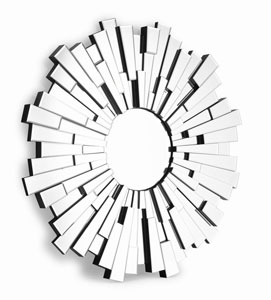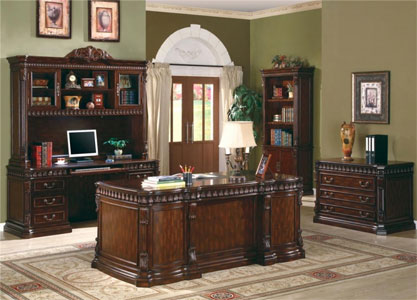Beyond Bed: Other Pieces of Bedroom Furniture
Moving Beyond the Bed: Other Pieces of Bedroom Furniture
Although the bed is any bedroom’s focal point, we offer a wide selection of matching furniture, including armoires, dressers, blanket rack, vanities, mirrors, benches and nightstands. Feel free to mix and match from different collections to create your own signature style.
Some things to remember about beds:
- Lumber is generally stronger, more durable and more beautiful than particle board or medium density fiberboard (MDF). Keep in mind that it is also more expensive.
- Beware of two words: “assembly required.” This is common with particle board beds. While home assembly will save you money, for those who aren’t comfortable building their own furniture, it can be a daunting task.
Bedroom Basics
Beds
Bed sizes: Size will be your first consideration and depends upon the size of the person or people sleeping in the bed. The names and dimensions of the most common sizes are:
- California king bed: 72” wide x 84” long
- Eastern King/Standard King bed: 76” wide x 80” long
- Queen bed: 60” wide x 80” long
- Full bed (or double bed): 54” wide x 75” long
- Twin bed: 39” wide x 75” (80” for extra-long twin beds)
Always consider the size of your bed—and bedroom!
The second factor to consider when picking a bed size is the size of the bedroom. It is necessary to have space to walk around the bed, access your closet, and change the sheets. Take advantage of our easy-to-use room planner to make selecting the style—and size—of your bed easier: Room Planner
Bed configurations:
Most beds have a tall headboard on one end and a short footboard on the other. In between the two is the frame, where the mattress lays. There are many variations, as well—your choice will depend upon your own personal comfort needs and the room’s décor. Tall people should avoid beds with footboards, as they can make stretching out difficult. If you yourself are tall, and really want a footboard, try a sleigh bed that curves out away from the top of the mattress.
Remember that a bed’s configuration will also affect your room’s overall feel. For example, an iron bed might look good in an antique-filled room, yet it won’t fit well in a bedroom with a modern décor (sleek, low-profile platforms would go great here.) When shopping, be sure to envision how the bed will look amongst your other bedroom furniture and decorations.
Bed construction:
Different materials require different care and cleaning. Wood beds are typically easier to clean than other materials like powder-coated steel or brass. Metal beds, on the other hand, aren’t as susceptible to damage. Remember to consider how often you might be moving the bed: if you plan on moving often, consider buying something lightweight, and easily-disassembled.
Nightstands
Night stands come in a wide variety of styles: with drawers, doors, a combination of both, or open shelves. Remember to measure the height of your bedside table—it’ll need to be tall enough so that you can reach your alarm clock from bed. Like beds, nightstands come in a variety of sizes: some are short, to sit beside platform beds; others are taller, to complement a traditional bed/box spring. A good rule of thumb is to have your night table be approximately as high as your mattress.
Armoires
An armoire (or wardrobe) can add a beautiful element to your room. Even if you already have a large closet, they can add a lot of warmth. There are multiple armoire configurations; the most basic features a clothing rod behind double doors, and several drawers at its base. More complex armoires include an “entertainment cabinet,” which contains a place for a TV and stereo. Remember that armoires do take up considerable space: never buy one that is too big for your bedroom. And always remember to measure the door; make sure its dimensions will permit it to be moved in and out of the room.
Dressers and chests
The Antiguan Drawer Dresser by American Drew and the Levanto Dresser by Homelegance will spruce up any room. Dressers are all about the drawers. In short, the bigger the better: when you’re short on drawer space you end up stuffing clothes in. With increased drawer space, your clothes won’t get wrinkled. Chests and dressers are just about the same thing. Dressers are typically wider than they are tall; chests are a single vertical column of drawers stacked on top of each other. Lingerie chests are narrower and smaller; perfect for storing, well, lingerie. Always measure carefully, so you will know exactly how much space you have for your dresser or chest to occupy—ensuring it will fit though the doorway, around the bed, and comfortably in your room.

Levanto Dresser by Homelegance
Common bedroom furniture terms:
Trundle bed: is a rolling bed that collapses to be stored underneath a regular stationary bed. It is perfect for houses with kids; it gives them a little more room to play during the day.
Daybeds: are a combination couch and bed. They have a board or frame that wraps around three sides of the bed, like a couch. The back and sides can be lined with pillows to make it more comfortable. Daybeds are different from futons; they do not fold down flat and use a traditional mattress.
Mattresses: Typically beds and mattress sets are sold separately. With a box spring and matching mattress all that is required is a basic frame with a few wooden planks to span the width of the frame. In fact, some beds don’t even use box springs (for example, platform beds with a short headboard). For these types of beds, you can consider a memory foam mattress, an air mattress or any other mattress that only requires a stable platform.

